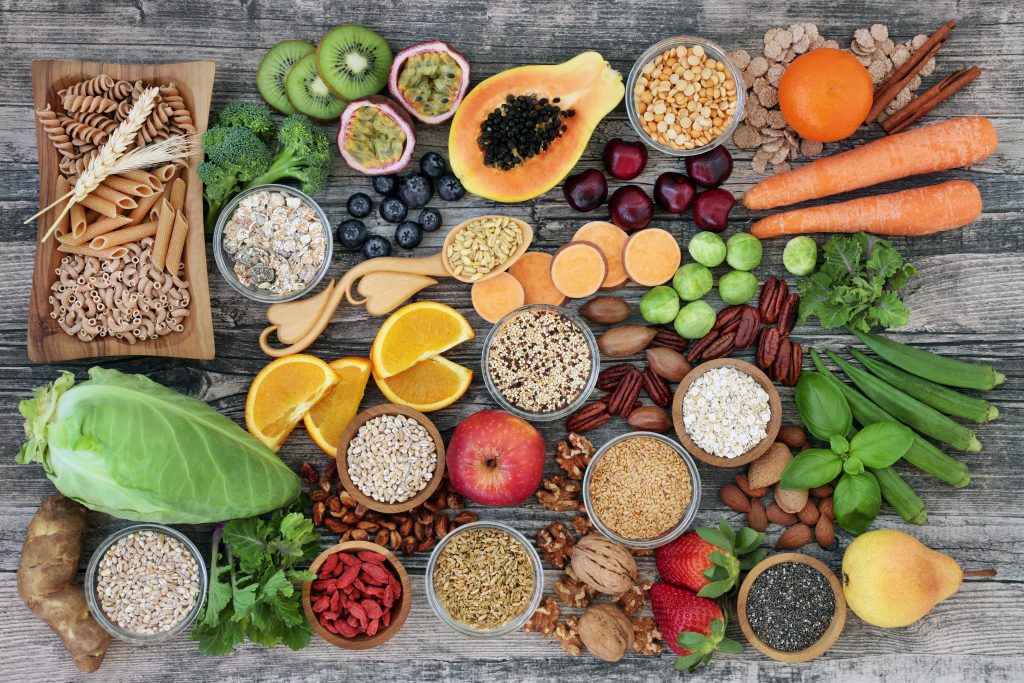So you’ve promised to return the favour and cook dinner for your friends, but you’re keen not to serve up a repeat of the signature peanut butter curry or zingy stir-fry, and you know that pesto pasta just won’t cut it. Maybe, like 13 million other Brits, you feel uneasy in the kitchen and, to top it off, you’re also a cash-strapped student. But fear not! We’ve teamed up with dishy chef Leon Rothera, who has enjoyed an eclectic culinary career, from Michelin-star training to film-set catering for Oscar winning actors. Coming up with a new menu every day on-set for Hollywood A-Listers has meant that Leon now carries an impressive armory of more than 1,000 recipes. e call him the human recipe encyclopedia!
To help you achieve culinary greatness on a shoestring, Leon has shared with Student Pages his eight top tips for impressing on a budget. While he hardly ever copies a recipe, we’re giving you full permission to copy his:
-
Remember the five basic tastes.
This is something to bear in mind when making any meal. If you’ve ever wondered why restaurant meals consistently taste better than your own home-cooked concoctions, this is likely the reason. Home cooks everywhere know the importance of balancing nutrients, but the significance of balancing flavours is usually forgotten. When cooking, keep in mind the five pillars around which all meals should be centred: salt, sweet, bitter, sour and umami. By making sure that your cupboard is stocked with soy sauce, honey, lemon, salt, and various herbs, you’ll struggle to avoid hitting the five basic tastes and lift a dish that would otherwise be bland and unappetising.
-
Fail to prepare, prepare to fail.
Whilst it may seem simple, this tip is so often overlooked, resulting in everything from semi-burnt to partially-raw dinners. It’s particularly important to remember this when cooking for more people than you’re used to; unsurprisingly, there is a difference between cooking for one and cooking for four!
Student kitchens are often overcrowded and challenging to maneuver around, making it all too easy to forget a crucial step in your recipe or leave something in the oven for an extra fifteen minutes longer than needed.There’s nothing worse than realising that you need to finely chop two onions while the pan is quickly burning your garlic, but all the chopping boards are being used. So, to make the cooking process as seamless as possible, prep your ingredients first. The French culinary practice of mise en place (that is, having all your chopped ingredients ready to be chucked in) will increase your enjoyment experimenting in the kitchen tenfold. You’ll be able to chat away with your guests in the comfort of knowing that everything really is under control.
-
Taste the texture
Zero prior cooking knowledge is required to get on board with this hack, yet it is so often forgotten. If your meal is primarily made up of wet ingredients, add in something crunchy. For example, think croutons in a soup. Next time you’re hosting your friends for dinner, think about the consistency of your ingredients: how creamy, chewy or crispy is your recipe? Unless you’re cooking for a six month old, there’s no reason for your meal to be comprised of 90% soft foods.
If texture wasn’t important, we would all just sustain ourselves off of the likes of shakes! Numerous scientific studies have shown that people struggle to identify pureed versions of familiar foods because flavour must be considered alongside consistency. Satisfaction from food is intrinsically linked to its involvement of different textures and encouraging the act of chewing.
-
Browning meat
This is a super quick and easy recommendation that is guaranteed to take your dinner party up a notch. Most students think of browning meat as an advanced step that maybe they’ll consider after university and that they don’t need to bother with in their current kitchen, but it’s crucial for any meat based dishes. It’ll give protein a richer, deeper flavour in under five minutes, so it’s actually ideal for time-poor undergraduates.
Heat a little oil in a saucepan or frying pan and add in your meat pieces once the pan is hot (you should hear it sizzle when the meat goes in). Then don’t touch it for at least one to two minutes. Leave it to brown undisturbed: the meat should only be turned over once it can be removed gently and freely from the bottom of the pan and if it is still sticking then it just needs longer. It might seem counterintuitive and may feel as though you are just actively burning the meat, but trust me on this one. You’ll thank me later.
-
One man’s trash is another man’s treasure.
Stop binning perfectly good ingredients. Not only should we be trying to limit our waste, there’s also no excuse for throwing away food when you are on a budget. Take carrot greens, for example. Instead of immediately discarding them, your carrot greens should be thought of in the same way as parsley. It takes ten minutes to transform long-neglected carrot tops into a fresh, tangy and unique pesto, and then you won’t feel quite so guilty about serving up a pesto pasta again!
Just blanch and drain the carrot tops before chucking them into a food processor along with chopped garlic, lemon juice and zest, walnuts, olive oil, mint, salt and pepper. Carrot greens can also be used as a garnish or even sauteed as a stand-alone side dish.
-
Don’t get in a pickle.
Pickling, from the humble pickled onion to kimchi with a kick, is a great way to use up leftover veg. The juice that preserves your pickles is a miracle ingredient that can be put to use both in and around the kitchen, making the perfect brine for fried chicken, vinegar substitute, or even cleaning agent for soaking tarnished copper pots! Save on your household spending by reusing pickle juice to deep clean your house (even if that only happens once a term!).
-
Caramelise your veg.
It is no secret that there has been a huge movement towards plant-based cooking. espite this, a large portion of the population still shun the most nutritious food group or have no clue how to cook it. Forget soggy, bland boiled veg – caramelising vegetables is a sure-fire way to impress your diners.
As with the carrot top pesto, simply blanch your vegetables before drying them and adding them to a large saucepan for 30 minutes on low heat, greased with butter and oil. Gently stir in sugar and a dash of vinegar before serving up your delicious veggie sides. Alternatively, drizzle olive oil, salt and pepper over washed carrots and roast for 20 minutes until tender. Remove and lightly coat with fresh lemon juice and honey before popping back in the oven for a further 10 minutes, and voila! Honey roasted carrots to butter up your guests.
-
Get scrappy with stock.
Shop-bought stocks can be monotonous and boring, and before you know it, all your meals taste identical. Not to mention, some are packed full of MSG. But making your own stock is incredibly time consuming, and slow cooking a chicken for four hours doesn’t fit naturally into a busy student schedule. There is no need to either: this process can be streamlined easily and can be made from the scraps around your kitchen (even with those nearly-out-of-date carrots that your flatmate hasn’t thrown away yet).
This chicken ‘stock’ is the base of my amazing Asian broth recipe that I learnt in Singapore, using the leftover carcass from a Sunday roast. The best part? Fill an ice tray with the leftovers for fresh, nutritious stock as and when you need it for future soups and sauces.
Recipe for stock and Asian broth
Ingredients
For stock
-
1 carcass of chicken
-
1 carrot
-
1 celery
-
1 leek
-
Half a brown onion
-
Bulb of garlic
-
Handful of rosemary
-
Handful of thyme
For Asian broth
-
Dash of soya sauce
-
320g of macaroni
-
Chicken (picked off the carcass)
-
Handful of coriander
Method
-
Taking the carcass of leftover roast chicken, pick off any excess meat and place in a bowl.
-
Place the carcass in a saucepan on the boil with 2 litres of water.
-
Roughly chop carrot, celery, and leek and add into the saucepan.
-
Peel and roughly chop half a brown onion and add into the saucepan.
-
Add a peeled bulb of garlic into the saucepan, alongside a handful of rosemary and thyme.
-
Leave to simmer for two hours.
-
Boil and cook the macaroni for the broth.
-
Ladle the stock into separate bowls, adding a dash of soya sauce into each.
-
Add in the cooked macaroni and the excess chicken that was taken off the carcass.
-
Season with aromatic coriander and serve.
-
Freeze the remainder of the stock in ice cube trays for later use.
Follow Leon on Instagram


















